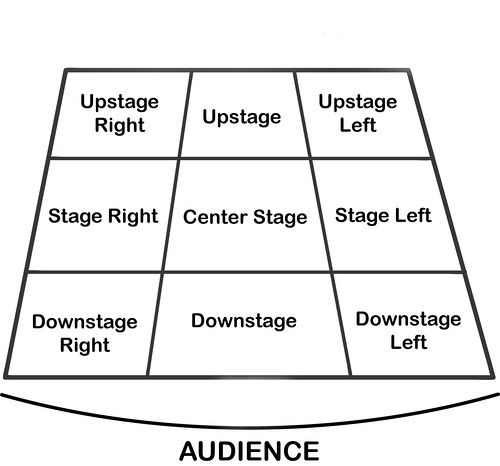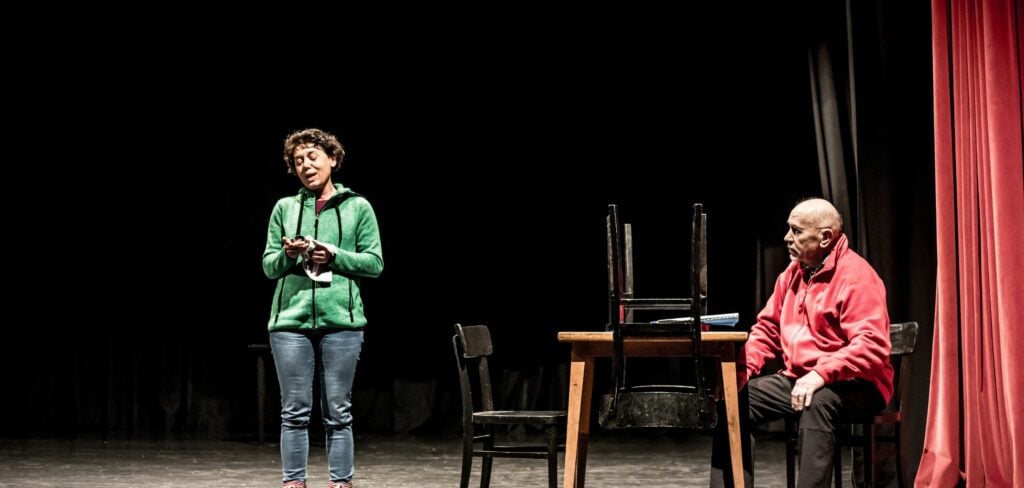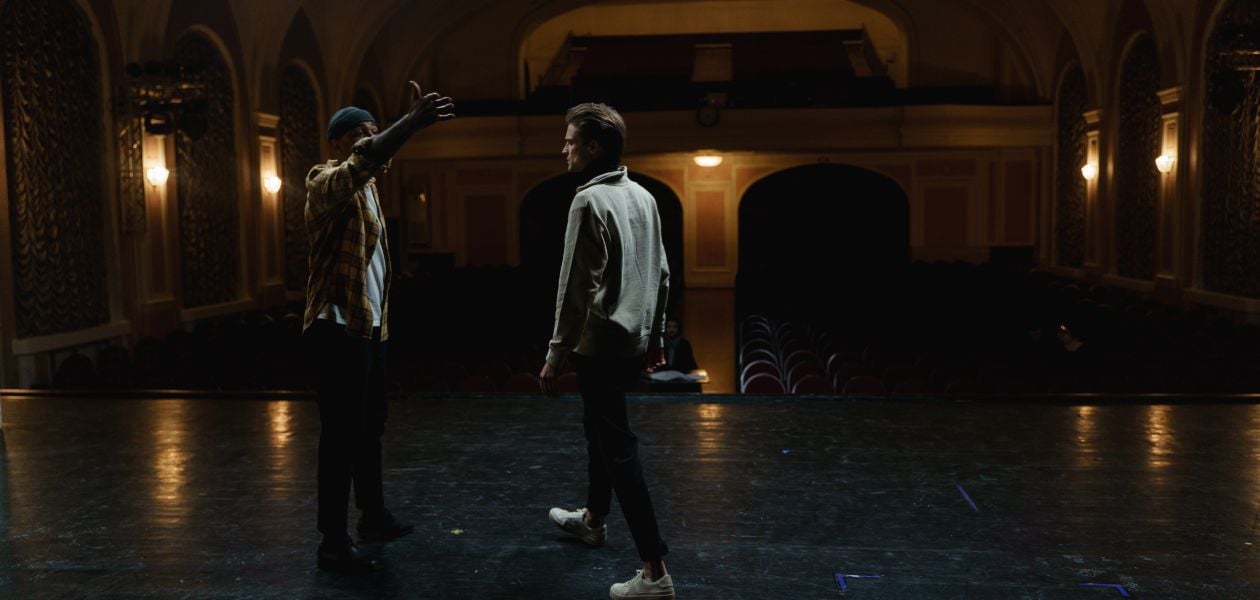
Stage Directions (An Actor’s Guide)
You open a play to page one, and the first thing that comes tearing at you is a whole swathe of italics, a writer ranting at you about the lighting in Brooklyn in the summer of ’73, in-depth descriptions of a library or simply “They cross the Andes”: the indomitable OG of wild stage directions from Peter Shaffer’s 1964 play The Royal Hunt of the Sun. What are these italicised commands? And how can you, as an aspiring actor, make sense of them? Separate the wheat from the chaff? The Tenessee Williams from Eugene Ionesco? The answers are contained below, so read on to uncover the mysteries and intricacies of stage directions in theatrical productions!
Updated 4th October, 2022.
What are Stage Directions?
Stage directions are instructions in a play for technical aspects of the production, such as lighting, sound, costume, scenery or props and, most importantly, the movement of actors onstage. It is the stage directions that tell you what a character looks like, where they travel in the space and what the space looks and sounds like.
Stage directions give you vital information for the action and relationships between people, things and places inside a text. They also give you an insight into the playwright and how they approach their work. Shakespeare was famously very light on the stage directions, his only credited one is ‘Exit stage left, pursued by a bear’! This is because he was acting in or directing his own pieces and didn’t need to write down the stage directions. Tennessee Williams, on the other hand, was incredibly descriptive, outrageously prescriptive and wrote genuine essay-length stage directions! Each writer has their own style, and it is your job as the actor to know what these instructions mean and how to make them work for you on stage.
Types of Stage Directions
Different types of stage directions will give you different types of information. Sometimes, it’s purely for the ease of blocking a scene—working out where the actors stand and how they’ll move around the space. Other times, it’s more descriptive of the world of the play, allowing you to conduct analysis as to how you might bring words off the page and into life. One thing to keep in mind is that while you’ll likely read every word written down in the script, not all stage directions may be relevant to you directly. Sometimes, they’ll be of more use to the director, design team or the dramaturg. By learning the different types of stage directions, you’ll get a better sense of what the author was trying to convey in writing them down, and how they may help you in your performance.
The Basics of Movement Directions
You may have heard of the idea of “stage left” or “centre stage”. These are actual terms used in the theatre to describe the various positions on the stage. They are always given from the actors perspective—upstage being towards the back of the auditorium and downstage towards the audience. Left and right correspond to the actor looking out at the audience. It can be a little confusing at first, but with practice it becomes second nature. See this helpful diagram below:

So now when you read the stage directions from Look Back in Anger by John Osborne and read the following in Act 1: “(He walks C., behind Cliff, and stands, looking down at his head.)”, you know that you have to move from where you finished you last line to centre stage and peer down at the other actor sitting in the chair! Easy, right?
One important variation of this convention is the use of “prompt side” (P) and “opposite prompt (side)” (OP), which are alternate names for stage-left and stage-right. More a staple in British theatre, they refer to the “prompt corner” traditionally occupied by the stage manager to the left side of the stage—a nook where actor’s could be safely prompted if they forgot their place in a play. Prompt corners are still common features in modern theatres, although their placement to stage-left is not always guaranteed. All the same, many actors and directors favour P and OP as they eliminate the sometimes-confusion of having to clarify which person’s left or right is being spoken about.
Scenic Stage Directions
The opening stage directions to Ibsen’s Hedda Gabler looks like this:
“In the back, a wide doorway with curtains drawn back, leading into a smaller room decorated in the same style as the drawing-room. In the right-hand wall of the front room, a folding door leading out to the hall. In the opposite wall, on the left, a glass door, also with curtains drawn back. Through the panes can be seen part of a veranda outside, and trees covered with autumn foliage.”
This is some specific work, here, am I right? Ibsen knows exactly how he wants the stage to look and even now, decades after his passing, the stage for this play nearly always looks the same. Here is a picture of a production at the Royal Lyceum Theatre in Edinburgh, directed by Amanda Gaughan in 2015:

You can see that Ibsen’s stage directions from hundreds of years ago have been brought faithfully to life in this production.
That being said, you also can see the directors and designers of these shows, creatively interpreting these instructions to suit their own spaces and their own visions of the production. They may not have the entrances and exits in the right spots and will have to slightly adjust Ibsen’s plan to make it work. When stage directions are this specific, however, the production of them tends to be very close to the description provided. The world the playwright sets up is more often than not integral to the characters on the stage and needs to be treated as such.
Of course, some directors will look at a page’s worth of description of a room and say: “Let’s cross this out, team: our production of Virginia Woolf takes place on a moon base!” This is perfectly fair, provided that the new staging reflects the original intention and vision of the author’s words. However, some authors/their estates are famous for having productions follow stage directions to a tee—some even threaten legal action for any unsanctioned deviations. Samuel Beckett’s estate is famous for their pursuit of companies who think his (many) descriptions can be scribbled out and re-interpreted.
Costume and Character
A big element for any character onstage is their appearance. It is what lets us know who they are and how they see themselves in the world. Sometimes a playwright will give a full character description along with a costuming one that gives you a complete picture of who this person is. In John Osbourne’s Look Back in Anger, the protagonist Jimmy is described as follows:
“Jimmy is a tall, thin young man about twenty-five, wearing a very worn tweed jacket and flannels. Clouds of smoke fill the room from the pipe he is smoking. He is a disconcerting mixture of sincerity and cheerful malice, of tenderness and freebooting cruelty; restless, importunate, full of pride, a combination which alienates the sensitive and insensitive alike. Blistering honesty, or apparent honesty, like his, makes few friends. To many he may seem sensitive to the point of vulgarity. To others, he is simply a loudmouth.”
Now obviously, as the actor playing Jimmy, it would be difficult to play all of these aspects at the same time. However, if I was going to audition for the role, I would try and wear clothing that was similar to the description here. It gives you vital information: the character is working class, he is full of pent up energy and he smokes. That is someone who is very different from, say, the character description for James Bond—“A handsome man, in an immaculate suit, with a glint in his eye and a pistol in his jacket.” And you wouldn’t want to get your audition preparation confused one way or the other!
This is also why I always tell new actors that they must read the entire play! You must always read the full play, because the stage directions amongst many other things give you such wonderful and concrete ideas about your character—how they see themselves in the world and how the world around them reacts to their presence. Note the way that the simple character description of Jimmy gives us more clues about him than the clothes in his wardrobe: The pipe could be seen as an accessory to the outfit. But why does he smoke it? What does that suggest about the character’s mental state or propensity for bad habits? Why is his jacket worn? Why not buy a new one?
Sound, Lighting and Technical Aspects
The final technical aspect of stage directions are sound, lighting and other technical directions. These are not as important to actors as the other aspects above or below, but they are worth keeping in mind. A sound or a lighting effect can affect your performance significantly; when reading a play or doing preparation for an audition, always keep these notes in mind as a gunshot happening offstage in the middle of your monologue will probably be something you need to react to!
Performance Directions
Alongside these technical stage directions that deal with the practical aspects of putting on a show, playwrights will also include performative stage directions. These are often single word actions in parentheses that indicate how the playwright thinks the line should be delivered. These can completely change the meaning or subtext of a line. Examples include:
Gavin: I’m a golfer. I play golf.
Melissa: What else do you do?
Gavin: (smiling) I don’t understand what you mean.
From Party Time by Harold Pinter. Or try Medvedenko from Checkov’s The Seagull:
Medvedenko: Why? (Thoughtfully.) I don’t understand… Your health is good, your father may not be rich, but he has all he needs. My life’s far harder than yours. I make twenty-three roubles a month, that’s all, not counting pension deductions, and I don’t go round wearing black.
Or this interchange from Noel Coward’s Shadow Play:
Martha: How much do you mind?
Vicky: Mind what?
She takes the dressing-gown off the bed and goes into the bathroom, leaving the door open.
Martha: (firmly) About Simon and Sibyl.
Vicky: Heart-broken, dear— (She laughs.) You mustn’t be deceived by my gay frivolity, it’s really only masking agony and defeat and despair—
Martha: (helping herself to a cigarette) You’re extremely irritating.
You can see in all of these small excerpts how much these parentheticals add to or alter the course of the action. Smiling while saying “I don’t understand what you mean” adds in a swathe of subtext that wouldn’t be there otherwise. But perhaps one of the most important performance directions is…
Pause.
Beat.
Silence.
A moment.
…any of the above. In which something happens that is neither said nor performed with action, but is nonetheless very important. Far too many actors, when starting out, see the word “pause” in their scripts and think: “This is the part where I’ll stop for a moment. If it’s a “long pause” I might start on a mental grocery list…” Ask yourself why the author has put a pause in that moment. What moment of significance passed? What’s changed in your character’s objective, their approach to the scene or the power dynamic? Everything happens in those moments, even if nothing is physically going on.

How Much Attention Should I Pay to Stage Directions?
Fair question. It’s something of a divisive issue for actors, especially when it comes to performance stage directions. Below, we are going to outline two prevailing schools of thought on the subject:
#1 “Honour Everything” Approach
Exactly as it sounds. This approach says: if the script tells you to cry on the fifth line of Act 2, you cry on the fifth line of Act 2 come hell or high water! It is the challenge of the work for you, the actor, to bring your emotional vulnerability and bring it to life on cue! The writer has given you everything you need to do this and it is up to you to get inside the given circumstances of the character and execute their emotional journey as specified in the work, to the letter!
#2 Arthur Miller doesn’t own your choices….
The counterpoint to this is, as a wonderful teacher from Steppenwolf told me, is: “Arthur Miller doesn’t own your choices! He’s dead. He ain’t coming back!” The vibe here being: if you are not feeling it, do not make it happen just because the script says so. You must bring your own unique vision and interpretation of the role to bring it to life. If you attempt to generate an emotional state on cue, it will feel forced and fake to an audience rendering the moment invalid.
I think I ascribe to a third way, which is: sometimes, you just cannot make it happen. It might be difficult to feel complete joy on stage at night if you have suffered a death in the family during the day. You might find it easier to cry some nights rather than others. What I will say is that the text should be treated with great respect and seriousness. You should attempt to perform everything that is written in there; however, if you are unable to, or if a different choice occurs on a line that is more genuine for you, then go with it!
The person who is really there to help in these moments is your director. The director has the power to be able to say yes or no to sticking to these performative stage directions in a script, and you should consult with them before making any decisions either way. If you are auditioning for the role, I would encourage you to trust your gut, go with what feels right and be prepared to change your interpretation once you are in the audition room if required!
Conclusion
There you have it! Stage directions de-mystified! They can get a lot more esoteric than the examples listed here. I was once in a production of Eurydice by Sarah Ruhl which featured a stage direction of: “He builds a house out of string in front of her“ which was a technical challenge to achieve let me tell you! However, for the vast majority of the time, stage directions serve as fantastically detailed indicators of character, environment and relationships between your character and the rest of their world in any given piece. Hopefully this article has helped you understand the basics of stage directions. And if you would like to practice putting stage directions into action, why not sign up for our Online Scene Club below!

Leave a Reply